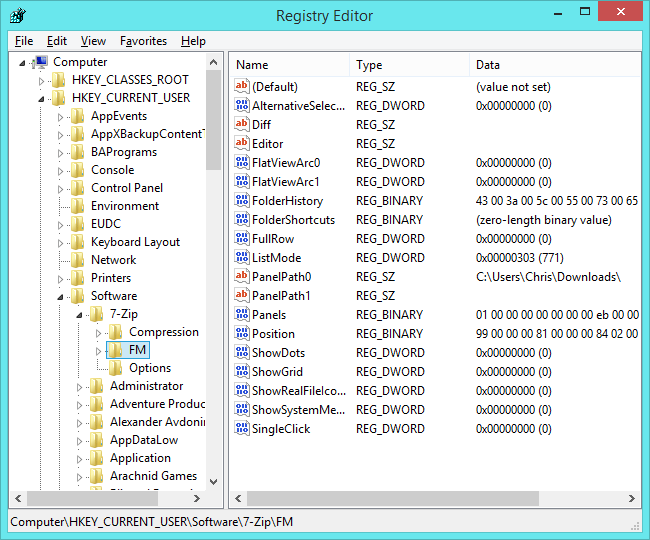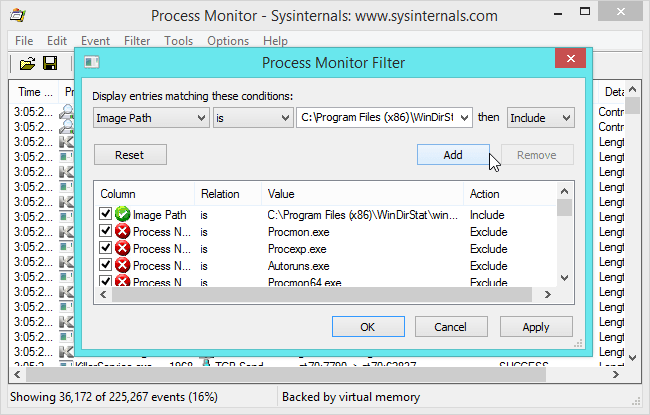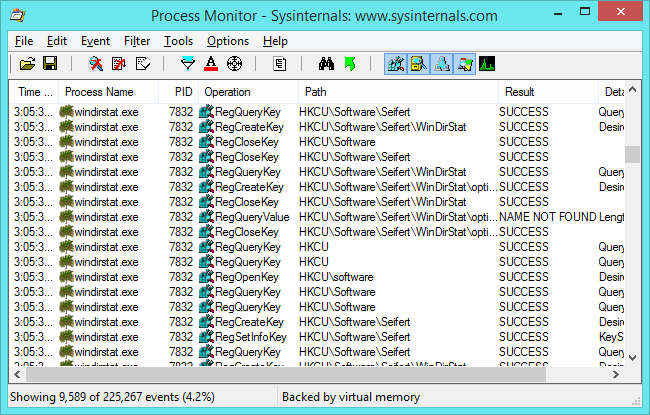Instructions to reset a program on Windows to the default installation state
If any program on your Windows computer is not working properly, simply reinstall the program to fix the error. However, you need to reset the program to the default settings. For some programs, the reset process is quite simple, but with some programs this process is not very simple at all.

1. The easiest way
To reset the installation of any program to the default mode, the simplest way is to simply uninstall the application and select the option Delete preferences or Delete settings in the Uninstall pane. By default this option is usually not available.

After uninstalling the program, proceed to reinstall the program.
However, not all programs have these options available in the installer. If the program does not have this option available, you can refer to some of the ways below.
2. Use the Reset Option option
Some programs have built-in Reset options. For example, in Firefox, you can reset it to the initial installation state without you having to "move your hand" into the Firefox profile folder.
You can access this option on your Firefox browser by clicking on the 3 dash line icon in the top right corner of the screen, then clicking the Help button with the dot question icon (?), Selecting Troubleshooting Information then click Reset Firefox .

On some other browsers like Chrome, Internet Explorer, . there are similar options.
3. Find and delete program settings
Before proceeding to delete any installation of a program, you should consider carefully. If you accidentally delete the wrong folder or Registry key, it means that you "delete" the installation of other programs and cause problems related to the system configuration.
Locations to install programs are stored in:
- User AppData account directory:

You can access this folder by entering C: UsersNAMEAppData in the File Explorer or Windows Explorer address bar and then pressing Enter.
By default this directory is hidden. Most settings of applications are stored in AppDataRoaming, however many settings are stored in the AppDataLocal folder.
- Windows Registry:

You can open the Windows Registry by pressing the Windows + R key combination to open the Run command window, then enter regedit there and press Enter.
Now you will find the installation of any program at HKEY_CURRENT_USERSoftware or HKEY_LOCAL_MACHINESoftware .
To delete the settings of a program, you just need to find the key (or directory) of the program, right-click it and delete the key (folder).
Note :
You must be very careful when performing the process, because accidentally deleting the wrong key will cause many problems on your system.
For example, if you want to "wipe" the installation of the Mumble program, then you must find and delete the HKEY_CURRENT_USERSoftwareMumble key. However, do not delete HKEY_CURRENT_USERSoftwareMicrosoft key because it will cause serious problems that you cannot anticipate.
- ProgramData folder:

This directory is located in C: ProgramData . Just enter C: ProgramData in the File Manager manager address bar and press Enter to access the folder.
When you delete a folder of any program, it means that all settings of the program will be erased.
If you try to 'write' applications in the Program Files folder, Windows will force older programs to store their settings there.
Also the application can store its settings anywhere. For example, many games store settings and save games in a folder located in the Documents folder.
A few other applications store settings right in the main user directory C: UsersNAME .
Some other programs store its settings in different locations, such as in the AppDataRoaming and Registry folders.
4. Check the programs with Process Monitor
Process Monitor will display the location of a program to store its settings.
Download Process Monitor to your computer and install it here.
All you need to do is run Process Monitor and open the application you want to reset. Process Monitor will correctly log the files and registry keys of the program and will notify you of the program's installation location. In addition, you can use Process Monitor to see exactly what files and settings you are using.
Click Menu Filter , then select Filter . Create a "Image Path" folder and select the path of the program in the Dropdown Menu.

Now you will see events related to specific programs. Scroll down the list and find the location of the installation program. Here you will see WinDirStart reading the settings from the Registry key:
HKEY_CURRENT_USERSoftwareSeifertWinDirStat
Close the program window, delete the registry keys and the appropriate files to reset the default settings. Once done, you can reinstall the program.

Some programs can recover from the deleted registry key and run with the default settings. Some other programs, users must install to create the registry key for those programs.
Also you can reinstall Windows or refresh your computer to delete all settings that you install the application.
Refer to some of the following articles:
- Instructions 2 simple ways Reset Windows 10 (Part 1)
- Instructions 2 simple ways Reset Windows 10 (The last part)
- Instructions to reset Windows 10 password without using the 3rd tool
Good luck!
You should read it
- How to reset Windows 10 Fall Creators Update
- How to Reset Your Computer
- Instructions to reset Android phone to restore factory settings
- How to fix 'There Was a Problem Resetting Your PC' error
- How to reset the status to expand the File Explorer navigation pane on Windows 10
- How to reset Windows 10 internet settings
- How to Reset Network Settings on PC or Mac
- How to Reset Samsung Galaxy S2 Phone
May be interested
- Summary of some simple ways to Reset Windows 10
 if your windows 10 computer is having some problems you can choose refresh, reset or restore to restore the problem. if you select reset windows 10 computer, all user accounts will be deleted, the settings will be restored to their original state ....
if your windows 10 computer is having some problems you can choose refresh, reset or restore to restore the problem. if you select reset windows 10 computer, all user accounts will be deleted, the settings will be restored to their original state .... - How to restore Chrome, Firefox, IE browser to the default state?
 after a long time of use, google chrome, firefox or internet explorer web browsers fall into a slow, sluggish state. even cleaning up each browser but the situation is not improving. the best way you should recover ....
after a long time of use, google chrome, firefox or internet explorer web browsers fall into a slow, sluggish state. even cleaning up each browser but the situation is not improving. the best way you should recover .... - Steps to Reset Firewall in Windows 10
 how to reset firewall (windows firewall) on windows operating system? instructions on how to reset windows firewall to default state..
how to reset firewall (windows firewall) on windows operating system? instructions on how to reset windows firewall to default state.. - 3 How to reset Win 7, Factory reset Windows 7
 if you want to resolve problems in microsoft operating system, improve performance and delete files, you should reset windows 7. tipsmake will guide you how to factory reset windows 7 in the following article.
if you want to resolve problems in microsoft operating system, improve performance and delete files, you should reset windows 7. tipsmake will guide you how to factory reset windows 7 in the following article. - Instructions for restoring default settings for Coc Coc
 the introduction of coc coc web browser to the initial installation status will help you to overcome the slow running situation and improve the browsing speed.
the introduction of coc coc web browser to the initial installation status will help you to overcome the slow running situation and improve the browsing speed. - How to fix 'An app default was reset' error on Windows 10
 you may get the status message 'an app default was reset'. this guide will show you how to fix and stop receiving the message an app default was reset on windows 10.
you may get the status message 'an app default was reset'. this guide will show you how to fix and stop receiving the message an app default was reset on windows 10. - How to reset Windows 10 Fall Creators Update
 the reset feature on windows 10 fall creators update will bring the computer back to the default state, without users having to install new with usb or dvd.
the reset feature on windows 10 fall creators update will bring the computer back to the default state, without users having to install new with usb or dvd. - How to reset Windows 10 to its original state
 how to reset windows 10 to the original state to help windows 10 work like the original, without common mistakes, or infected with viruses .... how to reset win 10 will be guided by tipsmake below.
how to reset windows 10 to the original state to help windows 10 work like the original, without common mistakes, or infected with viruses .... how to reset win 10 will be guided by tipsmake below. - Instructions to restore Windows 10 to the newly installed state
 restore windows 10 when the computer fails to help users return the computer to its original state, clean up junk on windows and speed up the computer after a period of use.
restore windows 10 when the computer fails to help users return the computer to its original state, clean up junk on windows and speed up the computer after a period of use. - How to reset GPU options for apps to default in Windows 10
 this guide will show you how to reset gpu graphics performance option for app settings to default in windows 10.
this guide will show you how to reset gpu graphics performance option for app settings to default in windows 10.










 How to assign Administrator permissions on a Windows 7 computer?
How to assign Administrator permissions on a Windows 7 computer? Losing Admin permissions on Windows 10 / 8.1, this is a fix
Losing Admin permissions on Windows 10 / 8.1, this is a fix 10 PowerShell commands help you manage the remote computer most effectively
10 PowerShell commands help you manage the remote computer most effectively Instructions for fixing 502 Bad Gateway error
Instructions for fixing 502 Bad Gateway error How to open and view .EML files on Windows 7, 8 and 10?
How to open and view .EML files on Windows 7, 8 and 10? Cause and how to fix 0x80070057 error on Windows
Cause and how to fix 0x80070057 error on Windows